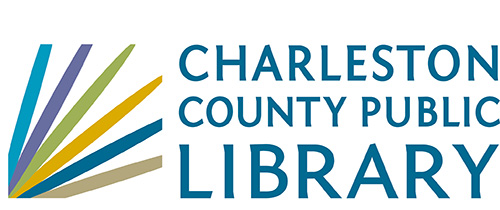Menu
×
West Ashley Library
Closed
Phone: (843) 766-6635
Folly Beach Library
Closed
Phone: (843) 588-2001
Edgar Allan Poe/Sullivan's Island Library
Closed for renovations
Phone: (843) 883-3914
Wando Mount Pleasant Library
Closed
Phone: (843) 805-6888
Village Library
Closed
Phone: (843) 884-9741
St. Paul's/Hollywood Library
Closed
Phone: (843) 889-3300
Otranto Road Library
Closed
Phone: (843) 572-4094
Mt. Pleasant Library
Closed
Phone: (843) 849-6161
McClellanville Library
Closed
Phone: (843) 887-3699
Keith Summey North Charleston Library
Closed
Phone: (843) 744-2489
John's Island Library
Closed
Phone: (843) 559-1945
Hurd/St. Andrews Library
Closed
Phone: (843) 766-2546
Miss Jane's Building (Edisto Library Temporary Location)
Closed
Phone: (843) 869-2355
Dorchester Road Library
Closed
Phone: (843) 552-6466
John L. Dart Library
Closed
Phone: (843) 722-7550
Baxter-Patrick James Island
Closed
Phone: (843) 795-6679
Main Library
2 p.m. – 5 p.m.
Phone: (843) 805-6930
Bees Ferry West Ashley Library
Closed
Phone: (843) 805-6892
Mobile Library
Closed
Phone: (843) 805-6909
Today's Hours
West Ashley Library
Closed
Phone: (843) 766-6635
Folly Beach Library
Closed
Phone: (843) 588-2001
Edgar Allan Poe/Sullivan's Island Library
Closed for renovations
Phone: (843) 883-3914
Wando Mount Pleasant Library
Closed
Phone: (843) 805-6888
Village Library
Closed
Phone: (843) 884-9741
St. Paul's/Hollywood Library
Closed
Phone: (843) 889-3300
Otranto Road Library
Closed
Phone: (843) 572-4094
Mt. Pleasant Library
Closed
Phone: (843) 849-6161
McClellanville Library
Closed
Phone: (843) 887-3699
Keith Summey North Charleston Library
Closed
Phone: (843) 744-2489
John's Island Library
Closed
Phone: (843) 559-1945
Hurd/St. Andrews Library
Closed
Phone: (843) 766-2546
Miss Jane's Building (Edisto Library Temporary Location)
Closed
Phone: (843) 869-2355
Dorchester Road Library
Closed
Phone: (843) 552-6466
John L. Dart Library
Closed
Phone: (843) 722-7550
Baxter-Patrick James Island
Closed
Phone: (843) 795-6679
Main Library
2 p.m. – 5 p.m.
Phone: (843) 805-6930
Bees Ferry West Ashley Library
Closed
Phone: (843) 805-6892
Mobile Library
Closed
Phone: (843) 805-6909
Patron Login
menu
Item request has been placed!
×
Item request cannot be made.
×
 Processing Request
Processing Request
Involvement of Matrix Metalloproteinases in COVID-19: Molecular Targets, Mechanisms, and Insights for Therapeutic Interventions.
Item request has been placed!
×
Item request cannot be made.
×
 Processing Request
Processing Request
- Author(s): Salomão, Rebecca; Assis, Victoria; de Sousa Neto, Ivo Vieira; Petriz, Bernardo; Babault, Nicolas; Durigan, João Luiz Quaglioti; de Cássia Marqueti, Rita
- Source:
Biology (2079-7737); Jun2023, Vol. 12 Issue 6, p843, 32p- Subject Terms:
- Source:
- Additional Information
- Abstract: Simple Summary: The costs worldwide of the coronavirus disease 2019 (COVID-19) have been tremendous. With millions of deaths in different countries, understanding biomarkers is essential to diminish the disease burden. For this purpose, a reflective understanding of the pathobiology of COVID-19 is required. During viral infection, some proteins require proteolytic activation and are involved in cell repair and maladaptive organ remodeling. This review summarizes the current findings on the role of increasing matrix metalloproteinases (MMPs) during acute respiratory syndrome coronavirus-2 (SARS-CoV-2) infection. COVID-19 patients present distinct complications that can be distinguished by MMP levels. MMPs in excess can generate tissue damage and aggravate the possible complications of COVID-19. MMPs participate in chronic inflammation, and their abnormal regulation is associated with human diseases. Interestingly, individuals with comorbidities or pathological conditions are more susceptible to increasing MMPs and to developing severe COVID-19 illnesses. Furthermore, MMP levels can predict the risk of in-hospital death by COVID-19, suggesting possible prognostic roles. Extensive knowledge of MMPs could provide novel perspectives on the symptoms, pathogenesis, and treatment of COVID-19. MMPs are enzymes involved in SARS-CoV-2 pathogenesis. Notably, the proteolytic activation of MMPs can occur through angiotensin II, immune cells, cytokines, and pro-oxidant agents. However, comprehensive information regarding the impact of MMPs in the different physiological systems with disease progression is not fully understood. In the current study, we review the recent biological advances in understanding the function of MMPs and examine time-course changes in MMPs during COVID-19. In addition, we explore the interplay between pre-existing comorbidities, disease severity, and MMPs. The reviewed studies showed increases in different MMP classes in the cerebrospinal fluid, lung, myocardium, peripheral blood cells, serum, and plasma in patients with COVID-19 compared to non-infected individuals. Individuals with arthritis, obesity, diabetes, hypertension, autoimmune diseases, and cancer had higher MMP levels when infected. Furthermore, this up-regulation may be associated with disease severity and the hospitalization period. Clarifying the molecular pathways and specific mechanisms that mediate MMP activity is important in developing optimized interventions to improve health and clinical outcomes during COVID-19. Furthermore, better knowledge of MMPs will likely provide possible pharmacological and non-pharmacological interventions. This relevant topic might add new concepts and implications for public health in the near future. [ABSTRACT FROM AUTHOR]
- Abstract: Copyright of Biology (2079-7737) is the property of MDPI and its content may not be copied or emailed to multiple sites or posted to a listserv without the copyright holder's express written permission. However, users may print, download, or email articles for individual use. This abstract may be abridged. No warranty is given about the accuracy of the copy. Users should refer to the original published version of the material for the full abstract. (Copyright applies to all Abstracts.)
- Abstract:
Contact CCPL
Copyright 2022 Charleston County Public Library Powered By EBSCO Stacks 3.3.0 [350.3] | Staff Login


No Comments.